- Home
- Conn Iggulden
Stormbird Page 38
Stormbird Read online
Page 38
John Neville was indeed captured by Queen Margaret’s forces for a time, but was still a prisoner in York until Edward entered the city after Towton, so did not fight in that battle.
In regard to the extraordinary event of 1461, when London refused entry to the queen, the king and the Prince of Wales, the key to it does appear to be the fear of northerners. It is true that Margaret’s army had been allowed to steal and butcher and burn their way down the country – without pay, the leash was off. At that time, northerners spoke a thick dialect that would have been almost unrecognizable to London ears. (Abbot Whethamstede described it as sounding like dogs barking.) Londoners would have feared the Scots in Margaret’s army even more – true ‘savages’ from what was then an unimaginably distant and unknown country. The sense of a foreign invader is difficult to comprehend today, but having Scots in her army did Margaret no favours in public perception.
Sir Henry Lovelace did in fact play a part in the run-up to the second battle of St Albans. Warwick created the most ornate defences, all facing north, only to have the queen’s army swing west to Dunstable and then strike Warwick’s army in the rear left square, working their way to the centre force. Although Derry Brewer is a fictional character, once again, someone like him must have existed to have gathered this sort of useful information. Lovelace may have been promised an earldom for passing on the details. It is true that he was one of Warwick’s close retinue. I changed his name to Sir Arthur Lovelace as I had another Henry in Earl Percy, one more in Henry Beaufort, the Duke of Somerset – and, of course, King Henry himself. With all the Richards and quite a few Edwards, it does seem at times as if the noblemen of medieval England chose their names from just half a dozen, in a hat.
After the second battle of St Albans in 1461, that disastrous rout, the Yorkist side had lost their control of King Henry – and with it, a large part of their authority and how they were perceived. They needed another king and Edward Plantagenet was in the right frame of mind to reach for a crown. As daring military decisions of history go, it would be the turning point in the York fortunes. It took slightly more careful managing than I have described, led by Bishop George Neville, who became a vital player for his show of support from the Church. It was Bishop Neville who declaimed Edward’s rights to rule in London on 1 March. Excited captains ran across the city, carrying the news that Edward of York was to be king. A slightly more formal ‘Great Council’ met at Baynard’s Castle on the bank of the Thames on 3 March. The entire process was put together in an incredibly short time and owes its success to sheer audacity – and London’s rejection of the house of Lancaster. The city had chosen sides when they refused to let King Henry enter. They had no choice at all but to back York.
On 4 March 1461, Edward made his coronation oath in Westminster Hall. From that moment, supporters and vital funds flooded in. London bankers lent him £4,048 to go with a previous £4,666 13s 4d. Individual loans were also made, from private individuals and religious houses in the city. Soldiers expected to be paid, fed and equipped.
On 6 March, Edward sent proclamations to the sheriffs of thirty-three English counties, as well as major cities such as Bristol and Coventry. Lords and commons came to fight for Edward Plantagenet at the same time as even greater numbers and twenty-eight lords were joining King Henry and Lancaster in the north. As nothing else, this explains why Edward declared himself king. From that day on, he assumed the power and authority of the Crown over feudal lords and their followers.
The speed at which such large armies gathered is impressive by modern terms. By the much slower medieval standard, this was a vast and furious rush to battle. It would have taken Edward’s army eight or nine days to march one hundred and eighty miles to Towton. The first skirmish was on 27/28 March at Ferrybridge, involving Edward, Fauconberg and Warwick – and the death of Clifford as he tried to reach the safety of the main force and was run down and killed by an arrow in the throat.
On 29 March 1461 – Palm Sunday – in a driving snowstorm, the battle lines of Towton came together. What followed is certainly the bloodiest battle on English soil. Historical estimates run as high as twenty-eight thousand dead, as reported by George Neville, bishop and chancellor, in a letter written nine days after the battle. That is around eight thousand higher than the first day of the Somme in 1916. It is worth noting that in the First World War, modern weapons existed, such as the mounted machine gun. At Towton, every man who died was cut by arrow, or sword, or mace, or billhook, or axe. The river ran red for three days afterwards.
Reports of the numbers fighting vary enormously, from the most likely estimates of sixty thousand to hundreds of thousands. The death toll was around one per cent of a population of just three million. In impact on the society, then, it would be the equivalent of a battle with six to seven hundred thousand dead today. In all the extraordinary tapestry of English and, later, British history, Towton stands out.
The name of Towton comes from the village nearby. The old road to London ran through it and it was better known than Saxton, though the battle was fought about halfway between them, in a place now known as ‘Bloody Meadow’. I recommend a visit. It is a bleak place. The steep flanks of Cock Beck are daunting enough on their own. In snow, for men in armour, they would have been an impossible obstacle for Lancastrians trying to retreat. Towton has become the established name of that terrible slaughter, though in the past it was known as York Field, Sherburn-in-Elmet (a town to the south), Cockbridge and Palm Sunday Field.
Note on weapons: billhooks, pollaxes and swords. The word ‘broadsword’ was not used at all in the fifteenth century. It came in much later to distinguish medieval swords from eighteenth- and nineteenth-century duelling swords. With individually crafted weapons such a key part of a knight’s kit, there were almost as many descriptive names as blades.
One medieval weapon in common use was the falchion, a single-edged cutlass very much like a modern machete, in that it was wide-bladed and top-heavy. Untrained working men called by Writs or Commissions of Array would do better with good, solid weapons of this sort.
The billhook and the pollaxe (or poleaxe) are similar in many respects, though the main blade of a billhook usually had a single point to pierce armour and the pollaxe used a crescent axe blade, and often a hammer on the opposite side. Both weapons often bore bayonet-style spikes and they are similar in the sense that they were three to five pounds of sharp steel bound to an axe-handle or longer pike-handle. Nicely weighted, they would have been devastating in the hands of untrained farmers and townsmen – men who were very familiar, however, with chopping tools. The billhook was used more in England than the pollaxe, though both found their way into the hands of the armies at Towton. Some of the crushed and broken skulls found in burial pits in that area can only have come from multiple, enraged blows – six or ten delivered with a pollaxe, say, to a body long dead. The level of savagery is comparable to a frenzied stabbing. Violent killing is clearly difficult to stop, once begun.
I hope I have described the main events of Towton accurately. Lord Fauconberg’s contact with the Lancaster lines is an example of how a good commander needs to respond to factors like changing weather and terrain. Under Fauconberg’s orders, archers loosed thousands of shafts and then immediately fell back out of range. In heavy snow, with visibility down to almost nothing, the Lancaster lines replied blind, wasting precious shafts. Fauconberg’s men gleefully collected those shafts – and sent them back. The Lancastrian lines suffered brutal losses in that one action – certainly thousands. They were stung into attack and the two armies crashed together.
Fauconberg used both wind and poor visibility to annihilate enemy positions, even before the main forces came together. His name is almost unknown compared with his nephew Warwick, but it is not too much of a stretch to say that Fauconberg was probably the better tactician. He lived just a few years after Towton, though I kept him alive a little longer into Part Two, for Warwick to consult, and also because I liked him.
As is so often the case with turning points of history, luck and the weather played a vital part. In the case of Towton, fortune favoured Edward of York. Norfolk’s right wing getting lost and falling behind turned out to be the key factor in breaking Lancastrian spirit. Norfolk never claimed to have planned the action, so we must assume it was as it seemed – a complete disaster, turning into a late arrival that was every bit as decisive as Blücher turning up at Waterloo. Eight or nine thousand fresh soldiers appearing on a flank would have been crushing to the fighting spirit of those who thought they were holding well. In the snow and the dark, it broke the forces of Lancaster – and the routed men drowned or were slaughtered as they tried to escape, crushed and beaten.
Historical fiction is often a struggle between the desire to tell the main story and the desire to reveal extraordinary side stories – at least in my experience. It is very common for me to learn of some scene which I simply cannot fit into the story arc. A novel must not bog down. My Part Two begins in 1464 and, in doing so, omits the attempt by Margaret in 1462 to take back the kingdom. It could easily be a book on its own. In exchange for mortgages on Calais, Margaret brokered with the French king for forty-three ships and eight hundred soldiers to support troops still loyal in England. She picked up King Henry from Scotland, made an armed landing and retook castles like Alnwick in Northumberland. Moving swiftly, Margaret took her fleet back to sea – where it was wrecked in a sudden storm. Margaret’s ship limped into Berwick and she escaped once again to France. Her father, René of Anjou, allowed her to live on a small estate in the Duchy of Bar, and she remained there with some two hundred supporters in poverty: the pitiful remainder of the Lancaster court. Margaret never lost hope, despite the sort of setback that would have broken many.
After betrayal, Henry was eventually captured in 1465 and taken to the Tower of London by Warwick. There is no record of him writing letters or poetry or anything at all. I suspect Henry was a broken figure by that time, an empty vessel. Five members of Edward IV’s household were paid well to wait on King Henry and others were brought in as needed. A priest, William Kymberley, celebrated Mass with him every day of his confinement. Henry’s solace, as always, lay in faith and prayer.
There is also no record of ill-treatment. A later text suggested the king endured torture, as part of an attempt to have Henry recognized as a saint. There is no proof either way, but records do exist of new clothes being fitted as well as wine sent from the royal cellars. At a later stage, there is a suggestion that Henry had become unkempt, possibly filthy, but it is most likely that he was by that point seriously mentally ill and unable or unwilling to look after himself. How that affects the judgement of Margaret in leaving him behind is a matter for discussion. It has turned some against her in the intervening centuries. It is only my own opinion, but I do not judge her too harshly for not loving a man who brought her so much pain and was never truly a husband to her.
Elizabeth Woodville came to court in 1465, with five brothers, two sons and seven unwed sisters. Older than Edward, of no great house, a widow with sons, it is true that Edward married her in secret and admitted as much to Warwick only while he was in the process of negotiating for a French bride.
Like the Nevilles before her, Elizabeth Woodville set about seeding her family into every noble house in England, so creating and shoring up support in the most powerful families of the realm. The marriage of John Woodville (nineteen) to the Dowager Duchess of Norfolk (sixty-five) was obviously an attempt to gain the title, part of the seven great marriages arranged by Elizabeth Woodville in the two years after being crowned queen consort. The Duke of Norfolk who had fought at Towton had died in 1461. He did in fact have a son, who was alive at the point of the ‘Diabolical Marriage’. That duke died suddenly, however, leaving only one daughter, so the title fell into disuse. If John Woodville had survived the Wars of the Roses, he could well have ended up as the duke and been free to marry again.
Beyond the seven great marriages, various titles came flowing down from the generosity of King Edward to his wife’s family. Her brother Anthony Woodville married the daughter of Baron Scales, the man who had poured wildfire on to the crowds of London. In doing so, Anthony Woodville inherited the title. Under Edward, he also became a knight of the Garter, Lord of the Isle of Wight, Lieutenant of Calais and Captain of the King’s Armada, to name but a few. Elizabeth Woodville’s father became the king’s treasurer and Earl Rivers.
King Edward was a man given to grand gestures and extraordinary generosity. He had made John Neville Earl of Northumberland, but as part of the trimming of the Neville vine, he forgave and then restored the Percy heir, taking the young Henry Percy from the Tower and returning him to his family estates. The idea that Henry Percy might have passed some of the intervening time with Warwick is my own invention. However, Richard of Gloucester, later King Richard III, spent some years growing up at Middleham and was apparently happy there.
It is interesting to note that the removal of the Great Seal from Archbishop George Neville went as I have described it, with the king and armed men riding to an inn at Charing Cross to demand it. It is unlikely that King Edward expected an armed response, but it does show how far his wife’s influence had turned him against the Neville family. The name ‘Charing Cross’ may be a corruption of ‘Chère Reine’ (Dear Queen) Cross, named after the commemorative crosses raised by Edward I after the death of his beloved wife Eleanor. Or that story could have been conflated with ‘Cierring’, an Anglo-Saxon word for a bend in a road or river. History truly is a collection of stories – and sometimes a mingling of fact and fiction.
It is also true that Edward sent Warwick to France and then concluded a deal of trade and mutual military support with Burgundy, then an autonomous dukedom, while Warwick was away. It can never be known if Edward might have accepted King Louis XI as his ally. From the start, the English king seemed to favour the dukes of Burgundy and Brittany – anyone, in fact, who was willing to snub the French court. It is speculation, but Edward had been successful on battlefields in Wales and at Towton. It is not beyond belief that the warrior-king of England dreamed of another Agincourt and winning back lands so recently lost.
A Burgundian delegation came to England and were there much flattered and praised. Anthony Woodville fought a famous, violent, two-day demonstration joust with their champion, the man splendidly named ‘the Bastard of Burgundy’. In Paris, Warwick was humiliated once again – and more importantly, King Louis had been publicly scorned. The French king who had earned his nickname of ‘the Universal Spider’, began to consider the problem of Edward and how to solve it.
It is true that Margaret of Anjou spent some time in Paris around this period. It is not known if she and Warwick had any contact at this stage.
For Warwick, the years of Edward’s marriage to Elizabeth Woodville had resulted in a string of personal and public humiliations. The final straw was King Edward forbidding George, Duke of Clarence, from marrying Isabel Neville. From Warwick’s point of view, it was a perfect match, a rise in status to offset the extraordinary wealth of his daughter’s inheritance. For King Edward, it was a union that could have produced sons to threaten his heirs. The house of York had risen to rule over an older line: he could not possibly let George, Duke of Clarence, create another royal bloodline that was wealthier than his own.
In addition, it is reasonable to suppose that Elizabeth would rather have found a Woodville for Isabel Neville, perhaps one of her sons. Age difference was clearly not an issue and letting such a plum as the Warwick fortune fall into another’s hands was never going to happen with Elizabeth’s consent. The only way left was for Warwick, Clarence and Isabel to defy King Edward. They travelled to Calais and Warwick’s daughter married George of Clarence in 1469, against Edward’s wishes and command.
In the first two books, I have tried to explore the sheer awe felt by some for the person of the king of England. It is the only thing that explains why King Henry rema
ined alive despite being captured by York and held for months at a time. Yet it is also true of human nature that ‘awe’ is less likely when one has witnessed a boy growing up and becoming king. No man is a prophet in his own home – and Warwick was sufficiently exasperated with Edward and his wife to throw it all into the air and arrange Edward’s capture and imprisonment. The history is slightly more complex, though the essence is that they incited and encouraged rebellion in the north to draw Edward out – and then ambushed him. George Neville, Archbishop of York, was indeed part of that capture, as was John Neville, then Marquess Montagu. It is true that Elizabeth Woodville’s father, Earl Rivers, and her brother, Sir John Woodville, were both executed after a rough mockery of a trial. The Neville family had been robbed and battered. Their revenge was both spectacular and savage.
The exact length of Edward IV’s captivity is unknown, but for the summer of 1469, Richard Neville, Earl Warwick, had two kings of England in his custody. Henry of Lancaster was in the Tower of London; Edward of York was in Warwick Castle and Middleham Castle. That unbelievable situation was what earned Richard Neville, Earl Warwick, the name of ‘Kingmaker’, above all else. He must have assumed he would benefit from imprisoning Edward, though his true intentions can never be known. Was it to put George of Clarence on the throne? To restore King Henry? There were a number of options and Warwick chose none of them because the country went up in flames. After an entire life seeing Henry reduced to an unloved and useless pawn, it is not so surprising, but Warwick completely misjudged the public response.

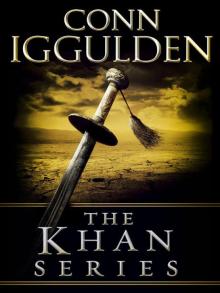 The Khan Series 5-Book Bundle
The Khan Series 5-Book Bundle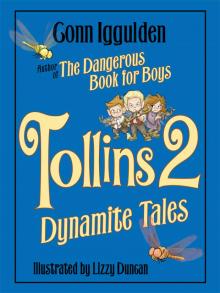 Tollins 2: Dynamite Tales
Tollins 2: Dynamite Tales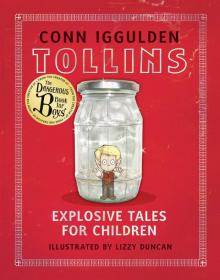 Tollins: Explosive Tales for Children
Tollins: Explosive Tales for Children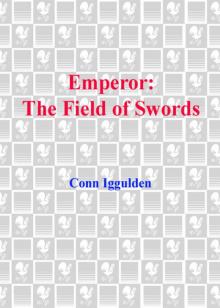 The Field of Swords
The Field of Swords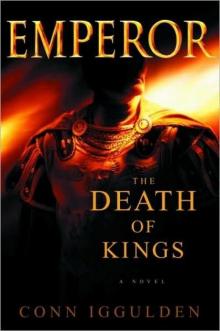 The Death of Kings
The Death of Kings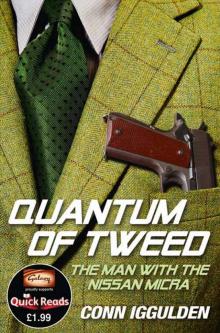 Quantum of Tweed: The Man With the Nissan Micra
Quantum of Tweed: The Man With the Nissan Micra Bones of the Hills
Bones of the Hills Genghis: Birth of an Empire
Genghis: Birth of an Empire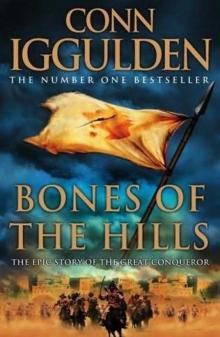 The Gates of Rome
The Gates of Rome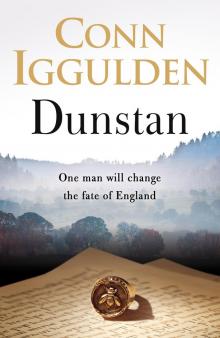 Dunstan
Dunstan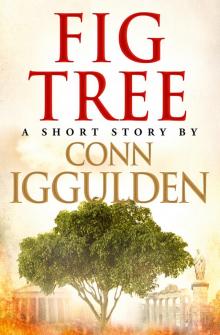 Fig Tree
Fig Tree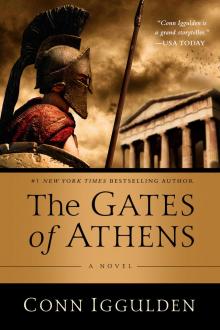 The Gates of Athens
The Gates of Athens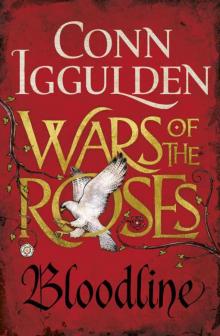 Stormbird
Stormbird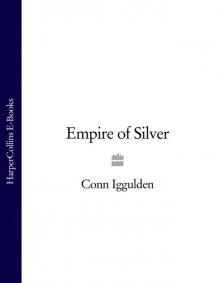 Khan: Empire of Silver
Khan: Empire of Silver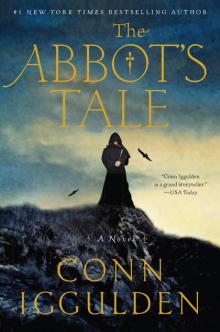 The Abbot's Tale
The Abbot's Tale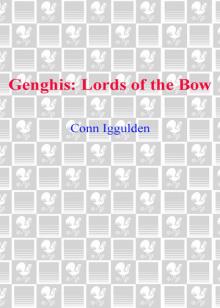 Gengis: Lords of the Bow
Gengis: Lords of the Bow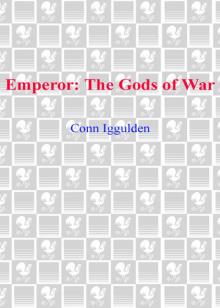 The Gods of War
The Gods of War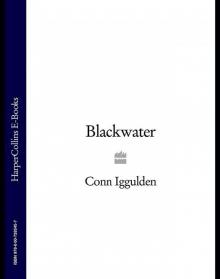 Blackwater
Blackwater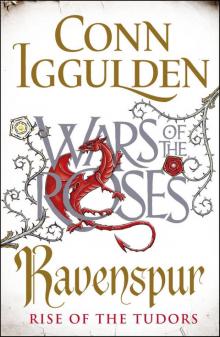 Ravenspur: Rise of the Tudors
Ravenspur: Rise of the Tudors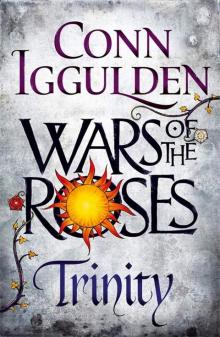 Wars of the Roses: Trinity (War of the Roses Book 2)
Wars of the Roses: Trinity (War of the Roses Book 2) The Gods of war e-4
The Gods of war e-4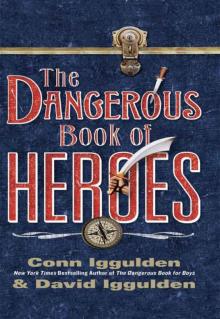 The Dangerous Book of Heroes
The Dangerous Book of Heroes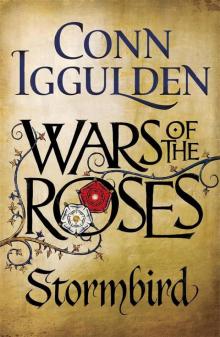 Stormbird wotr-1
Stormbird wotr-1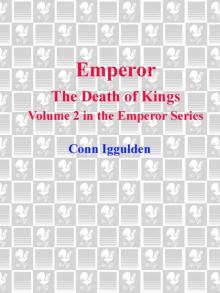 Emperor: The Death of Kings
Emperor: The Death of Kings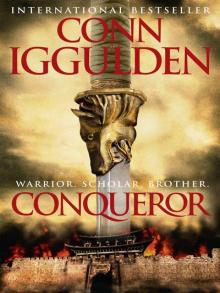 Conqueror (2011) c-5
Conqueror (2011) c-5 The Dangerous Book for Boys
The Dangerous Book for Boys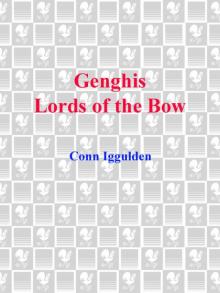 Genghis Lords of the Bow
Genghis Lords of the Bow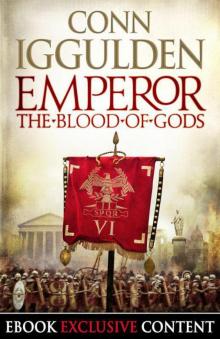 Emperor: The Blood of Gods (Special Edition) (Emperor Series, Book 5)
Emperor: The Blood of Gods (Special Edition) (Emperor Series, Book 5)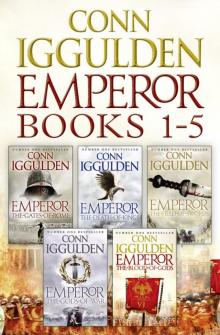 The Emperor Series: Books 1-5
The Emperor Series: Books 1-5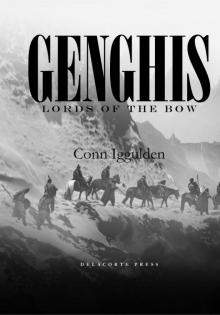 Lords of the Bow c-2
Lords of the Bow c-2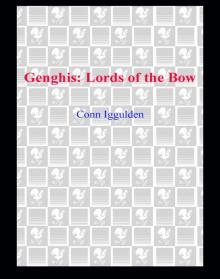 Lords of the Bow
Lords of the Bow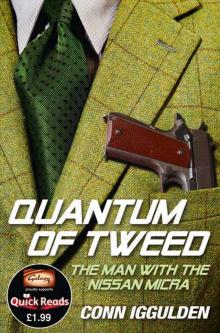 Quantum of Tweed
Quantum of Tweed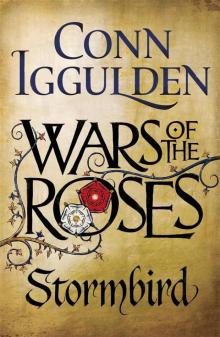 Wars of the Roses 01 - Stormbird
Wars of the Roses 01 - Stormbird Empire of Silver c-4
Empire of Silver c-4 Birth of an Empire
Birth of an Empire Conqueror (2011)
Conqueror (2011)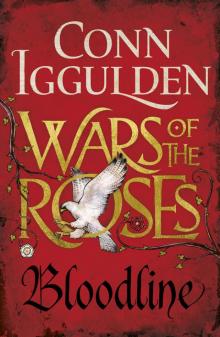 Wars of the Roses: Bloodline: Book 3 (The Wars of the Roses)
Wars of the Roses: Bloodline: Book 3 (The Wars of the Roses)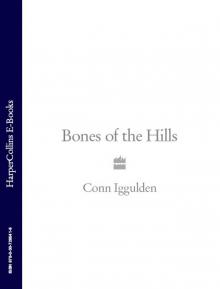 Bones Of the Hills c-3
Bones Of the Hills c-3 Empire of Silver
Empire of Silver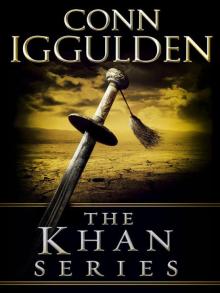 The Khan Series 5-Book Bundle: Genghis: Birth of an Empire, Genghis: Bones of the Hills, Genghis: Lords of the Bow, Khan: Empire of Silver, Conqueror
The Khan Series 5-Book Bundle: Genghis: Birth of an Empire, Genghis: Bones of the Hills, Genghis: Lords of the Bow, Khan: Empire of Silver, Conqueror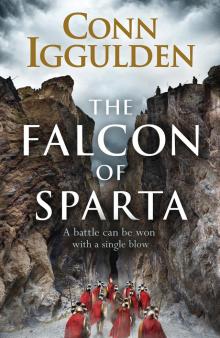 The Falcon of Sparta
The Falcon of Sparta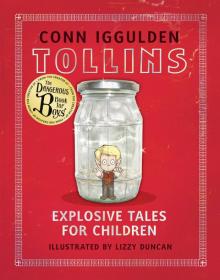 Explosive Tales for Children
Explosive Tales for Children